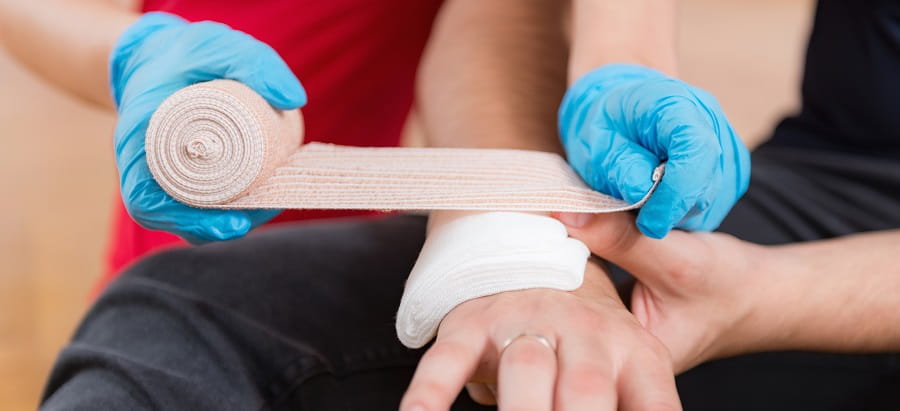
Treatment for external wounds will depend on the severity of the wound but will generally follow the same steps. Below are the different types of external wounds.
Grazes/abrasions
This type of wound is typically caused from scraping of the skin on a rough surface, such as pavement, bitumen or gravel. The blood vessels damaged in this type of injury are usually capillaries, causing the blood to ooze.
Cuts/lacerations
This type of wound involves an opening of the skin and the underlying tissue and can be caused by either a sharp or a blunt object. Sharp objects cause an incision with even edges, whereas blunt objects cause the skin to tear with uneven edges. The amount of bleeding will depend on whether a vein or artery has been damaged.
Puncture/penetrating
Knives, gunshots, tools or other objects can create this type of wound. Damage to arteries, veins and underlying body parts can occur, however there may not be a lot of external bleeding if the wound is more notably internal. There may be substantial internal bleeding if serious damage has occurred to the surrounding tissue and bone.
Amputation
A very serious injury, this can be a complete loss of a limb or part of a limb. Severed arteries will cause a lot of blood loss with this type of injury.
Treatment for external wounds:
- DRSABCD
- Apply direct pressure to the wound immediately and squeeze the edges of the wound together if possible. Blood loss can cause the patient to suffer from severe shock, so avoid any delays in applying direct pressure.
- Call 000 for an ambulance
- Protect yourself with gloves, eye protection and a face mask to avoid contact with any blood or fluid
- If possible, make the patient comfortable by sitting or lying down
- Inspect the wound. If foreign materials are present on the surface of the wound, lightly brush off using a sterile pad, or wash with saline solution if possible.
- DO NOT remove any foreign materials that are embedded in the wound, as this can increase the bleeding and cause further injury.
- Apply a clean pad over the wound, and a firm bandage around the wound area.
- DO NOT bandage the wound too tightly as this can cut off circulation
- If an object is protruding, DO NOT apply pressure on or over the object. Instead, apply pressure by padding around the object.
- After bandaging, check circulation below the wound
- If the bleeding does not stop, remove the bandage (leaving the pad in place) and apply a second pad over the first. Re-bandage firmly.
- DO NOT remove the first pad as this may remove any clots that are forming and increase the bleeding.